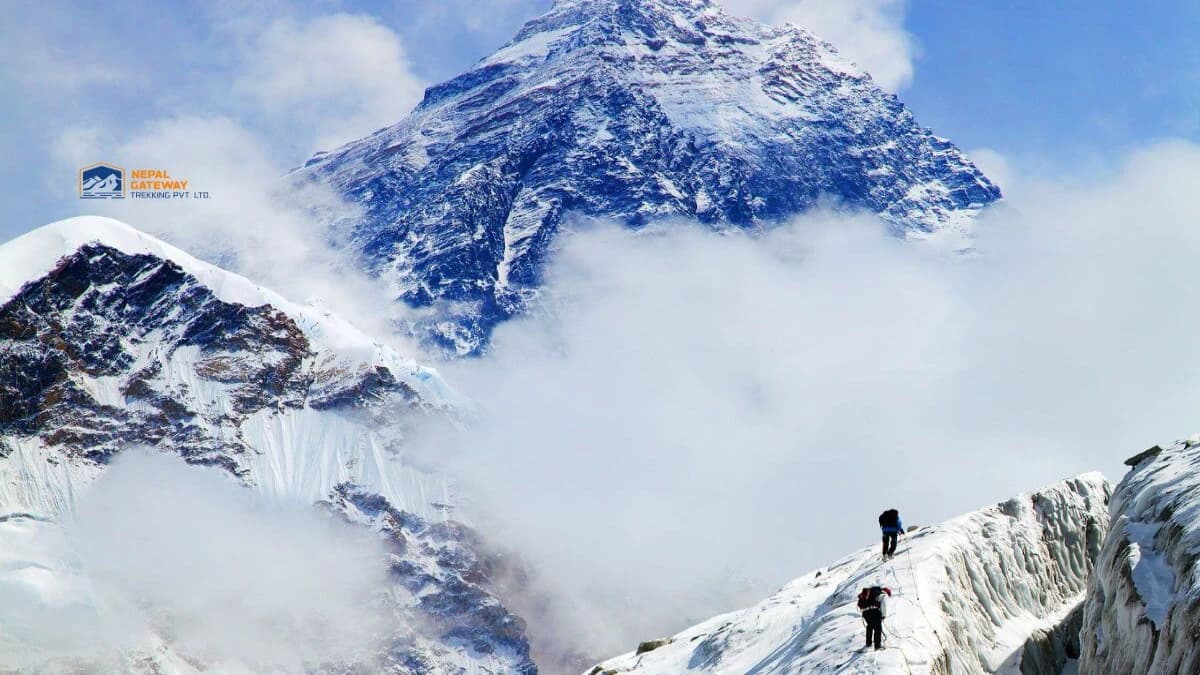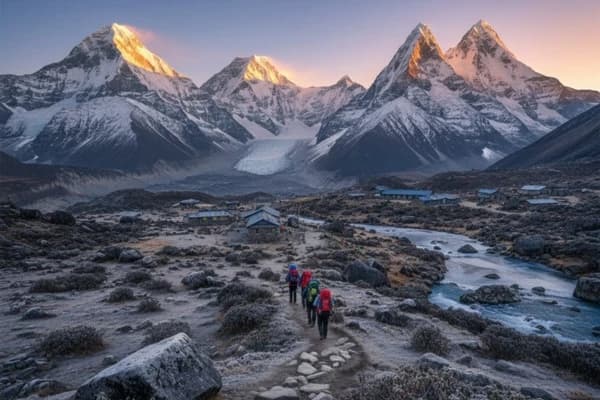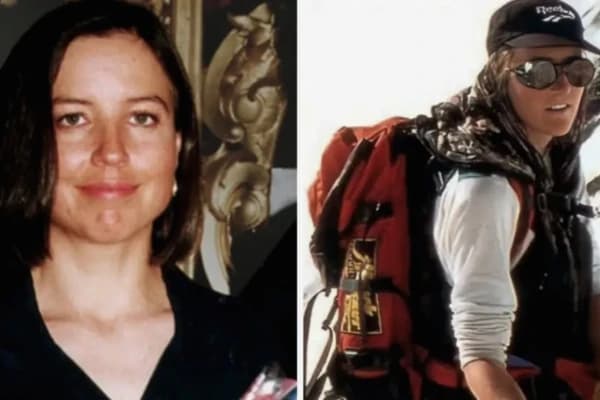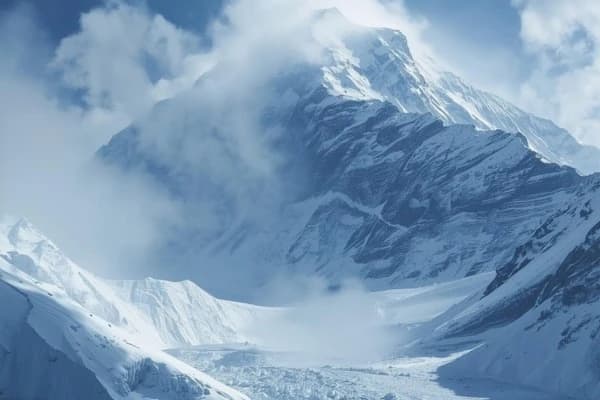Mount Everest is the tallest mountain on Earth, famous for its stunning views and the incredible challenge it offers to adventurers worldwide. Thousands of people from across the globe try to climb the mountain each year to stand on its snowy peak. Yet, every year, there are many examples of the tragic and dangerous spirit beneath Everest’s fame that are often not talked about.
Just below the top of the mountain is where Rainbow Valley Everest can be found. Rainbow Valley may sound lovely, but in truth it is just a spot where climbers who lost their lives on Everest are buried. The “rainbow” in the name comes from the striking suits that climbers wear as they freeze alive at the top. Looking at these colorful guys on the snow starts to look unimaginably sad — a sign of how difficult it can be to ascend Everest.
In this blog, we will explore the grim beauty of Rainbow Valley Everest and uncover why it is called the climbers’ graveyard. You’ll learn about the dangers of the Death Zone, why so many bodies remain where they fell, and the serious risks climbers face in this harsh environment. By understanding Rainbow Valley, we gain respect for the mountain, the brave souls who climb it, and the lessons it teaches about courage, risk, and the power of nature.
What Is Rainbow Valley Everest?
Rainbow Valley is a name that confuses many at first. It sounds like a beautiful natural wonder, but the reality is far more somber. Located just below Everest’s summit on the south route, Rainbow Valley Everest is the final resting place for dozens of climbers who didn’t make it back.
Why the colorful name? It comes from the vivid down suits worn by the deceased—reds, blues, yellows, and greens—frozen in place against rocks and ice. Over time, these bodies, still wearing their gear, have created a landscape dotted with colors, hence the name "Rainbow Valley."
This area lies in the infamous Death Zone, which begins at 8,000 meters above sea level. At this altitude, the air is so thin that the human body begins deteriorating. Climbers experience extreme fatigue, disorientation, and physical collapse.
In short, Rainbow Valley Everest is not a myth. It’s a real, tragic part of Mount Everest—a place of silent stories told through frozen forms and colorful gear.

Why Is It Called the Climber's Graveyard?
Rainbow Valley is often referred to as a climbers' graveyard for one heartbreaking reason: many mountaineers have died there, and their bodies remain. Despite being just a short distance from the summit, this area is deadly.
In the Death Zone, oxygen is scarce, and every step feels like a marathon. Climbers often reach this point after days of physical stress and altitude exposure. Even small mistakes—like tripping, pausing too long, or underestimating the weather—can be fatal.
Retrieving bodies from this region is incredibly difficult, and often impossible. Sherpas and rescue teams risk their own lives just to assist injured climbers, let alone bring down the deceased. As a result, the bodies remain where they fell, preserved by the freezing temperatures.
Over time, their colorful jackets and gear began to stand out on the white snow and grey rocks. The sight is shocking yet symbolic, serving as a warning to climbers of Everest's unforgiving nature.
Where Is the Everest Death Zone and Why Is It So Dangerous?
The Everest Death Zone starts at around 8,000 meters (26,247 feet) above sea level. It includes the final ascent toward the summit, where Rainbow Valley Everest is found, and is known as the most dangerous part of the climb. Why is it called the Death Zone? Because human survival is nearly impossible here for long durations.
Here’s what makes it so deadly:
- Lack of oxygen: The oxygen level is only one-third of what we get at sea level. Your brain and muscles don’t function normally.
- Freezing temperatures: It can drop to -41°C ( -42°F). Frostbite and hypothermia are real threats.
- Extreme fatigue: Every step feels like lifting heavy weights. Climbers often collapse from exhaustion.
- Unpredictable weather: Storms can appear out of nowhere, reducing visibility and increasing the chance of getting lost or frozen.
- Altitude sickness: Conditions like High Altitude Cerebral Edema (HACE) and Pulmonary Edema (HAPE) can cause death within hours.
Why Are Bodies Left on Everest?
It’s a heartbreaking reality that many climbers who have lost their lives on Mount Everest remain on the mountain, especially in areas like Rainbow Valley. You might wonder why their bodies aren’t brought back down for proper burials. The truth is that recovering bodies from Everest is one of the most difficult and dangerous tasks in high-altitude mountaineering. Here are the main reasons why bodies are often left where they fall:
- Extreme Altitude and Physical Challenges: Above 8,000 meters, often called the Death Zone, the oxygen level is so low that even simple movements become exhausting. Carrying a body, which can weigh more than 150 pounds when fully geared, requires enormous strength and stamina that most climbers simply don’t have at these heights.
- Danger to Rescuers: Sherpas and fellow climbers who attempt to retrieve bodies risk their own lives. The steep, icy slopes, harsh weather, and lack of oxygen make rescue missions extremely perilous. Many retrieval efforts are abandoned midway to protect the living.
- High Costs: The financial cost of recovering a body from Everest is enormous. This cost includes hiring specialized teams, permits, and sometimes helicopter support. For many families and expedition groups, this is simply beyond reach.
- Bodies Frozen in Place: Some climbers’ bodies become frozen in ice or trapped in crevasses, making physical removal a massive technical challenge. The cold preserves the bodies, but also makes moving them nearly impossible without risking injury or death.
- Respecting Family Wishes: In some cases, families decide to leave their loved ones on the mountain, honoring what the climbers wanted. For many, Everest was their final resting place and a symbol of their passion and bravery.
Famous bodies like "Green Boots" and "Sleeping Beauty" have become grim landmarks on Everest’s routes for years. While some have been respectfully relocated, many remain frozen in time, serving as solemn reminders of the mountain’s deadly risks.

What Are Some Shocking Everest Rainbow Valley Facts?
The truth about Rainbow Valley Everest is chilling—literally and figuratively. Here are some haunting facts that might surprise you:
- More than 300 climbers have died on Everest since expeditions began in the 1920s.
- Most deaths happen in the Death Zone, often during descent when climbers are most exhausted.
- The name "Rainbow Valley" was coined because of the brightly colored jackets and gear on fallen climbers.
- Only a small fraction of bodies have been recovered. Many lie along the main trail.
- Rescuing a single body from the Death Zone can take up to 8 Sherpas and weeks of effort.
- Some climbers have been forced to step over bodies on their way to the summit.
These realities have sparked debates in the mountaineering world. Should more be done to retrieve remains? Or should they be left as part of the mountain’s legacy?
Who Are Some of the Most Famous Climbers Who Died in Rainbow Valley?
Many notable climbers have tragically perished on Everest, and several are believed to be in or near Rainbow Valley. Here are a few stories that continue to echo:
- Green Boots: Thought to be Tsewang Paljor, an Indian climber who died in 1996. His body, lying in a cave-like area, became a landmark for over two decades.
- David Sharp: A British climber who died in 2006. He was seen alive by over 30 climbers, but most passed by, unable or unwilling to help. His death raised serious ethical questions.
- Francys Arsentiev: The first American woman to summit without supplemental oxygen. She died during descent. Her husband tried to save her, but also perished.
- Rob Hall and Doug Hansen: Two of the central figures in the tragic 1996 Everest disaster. Their story is told in the book Into Thin Air and the movie Everest.
These stories aren't just tragedies—they're warnings. Everest demands the highest respect, preparation, and teamwork.
How Can You Stay Safe While Climbing Everest?
Climbing Everest is a dream for many, but it requires intense preparation and respect for the mountain. Here’s how you can reduce the risks:
- Train seriously: Build strength, stamina, and high-altitude endurance months in advance.
- Use proper gear: High-quality, weather-tested equipment can be the difference between life and death.
- Hire experts: Go with agencies like Nepal Gateway Trekking that have experienced Sherpa guides and excellent safety records.
- Monitor health: Watch for signs of altitude sickness and be ready to descend if symptoms appear.
- Stick to the plan: Don’t get summit fever. If the weather turns or conditions worsen, know when to turn back.
Is Everest Worth the Risk Despite the Dangers?
This is the ultimate question. Climbing Everest is not just a physical challenge; it’s a mental and emotional one too.
For some, the rewards outweigh the risks. The sense of achievement, the views from the top of the world, and the test of human limits make it worth it.
But Rainbow Valley serves as a chilling reminder that the cost can be permanent.
If you're still dreaming of Everest, do it the right way:
- Prepare thoroughly.
- Climb with ethics.
- Use the best guides.
With the right team and smart choices, the risks can be reduced, but never eliminated.

Plan Your Safe Everest Trek with Nepal Gateway Trekking
Whether you're planning to reach Everest Base Camp, Gokyo Valley, or trekking to Everest Three High Passes, Nepal Gateway Trekking is your trusted guide.
Why choose Nepal Gateway Trekking?
- Experienced Sherpa Guides: Native experts who know Everest like the back of their hands
- Safe and Custom Itineraries: Adapted to your pace and altitude
- Affordable Packages: Get value without compromising safety
- Top Reviews: Loved and trusted by trekkers from around the globe
Visit Nepal Gateway Trekking to browse Everest packages, get pricing, or talk to an expert today.
Conclusion
Rainbow Valley Everest is not a graveyard; it's a master teacher. It teaches us about the raw rage of nature, the fragile edges of the human body, and the high price of ambition. This otherworldly place reminds us that mountains are things of wonder and a challenge to adventure, but they also demand deep respect and humility from each climber who decides to brave their challenge.
The bodies in Rainbow Valley are silent witnesses to the harsh realities of high-altitude climbing—the volatile weather, deadly avalanches, and merciless thin air of the Death Zone. They tell the story of courage, selflessness, and the ultimate sacrifice in chase of dreams at dizzying heights.
If you're ascending to Everest Base Camp or aspire to set foot at the top, have Rainbow Valley serve as a solemn reminder that each step on the mountain counts. Be strategic, take care of nature, and honor the mountaineers who came before you. Their heritage reminds us not only of the thrill of adventure but also of safety, grit, and a sense of respect for nature's raw strength.
Have questions or need expert guidance? Contact us today — we're here to help!
FAQs
What is Rainbow Valley Everest?
Rainbow Valley Everest lies beneath the uppermost level of Mount Everest, with the bodies of climbers who died in the Death Zone. The colorful down suits, ropes and gear strewn about the snow are what give this skiing spot its name. Because of the high altitude and freezing factors, many of these bodies have been maintained for decades.
Why is it called the Death Zone?
The Death Zone refers to elevations above 8,000 meters (26,247 feet), where oxygen levels are critically low. In this zone, the human body begins deteriorating rapidly due to hypoxia, making even simple tasks exhausting. Without supplemental oxygen, most people can only survive for a limited time, which is why this area is so deadly for climbers.
Can bodies be removed from Everest?
Removing bodies from Everest is extremely difficult, dangerous, and costly. The harsh weather, thin air, and steep terrain make recovery missions risky for rescuers. Many climbers' bodies are left where they fell, some becoming landmarks like those in Rainbow Valley. Occasionally, families request and fund retrievals, but most remain permanently on the mountain.
How many people have died on Everest?
Since recorded expeditions began, over 300 climbers have died on Mount Everest. Fatalities occur across all routes, but many bodies lie near the summit and in Rainbow Valley, where the terrain is too dangerous for recovery. Despite improvements in gear and logistics, the mountain continues to claim lives almost every season.
What causes death on Everest?
Common causes of death include altitude sickness (HAPE or HACE), extreme fatigue, hypothermia, avalanches, and accidental falls. In the Death Zone, oxygen scarcity leads to poor decision-making and physical collapse. Sudden weather changes can also trap climbers, turning an already dangerous climb into a deadly one.
Who was Green Boots?
Green Boots was a climber—believed to be Tsewang Paljor from India—who died during a 1996 Everest expedition. His body, wearing fluorescent green boots, remained curled in a rocky alcove on the northeast route for years, becoming a grim landmark for those passing by. For many climbers, seeing Green Boots marked both a physical waypoint and a stark reminder of what’s at stake up there.
Can you avoid Rainbow Valley while climbing?
If you’re ascending via the standard southeast route (South Col), Rainbow Valley lies directly along the final push to the summit. Avoiding it is nearly impossible. Climbers passing through often encounter the remains of those who didn’t make it back, a sobering reminder of the mountain’s deadly reputation.
What’s the best time to climb Everest?
The optimal times to climb Everest are during the pre-monsoon season (April to May) and post-monsoon season (late September to early October). These windows offer relatively stable weather, lower winds, and better visibility. Most successful summit attempts occur during these periods when conditions are safest for high-altitude ascents.
Is Everest safe with a guide?
Climbing Everest is never truly “safe,” but going with a skilled, experienced guide can make a world of difference. A good guide knows when to push forward and when to turn back. They read the mountain, manage your pace, monitor for altitude sickness, and step in fast if things go wrong. In a place where one mistake can cost your life, a guide isn’t a luxury—it’s a lifeline.
Why do people still climb despite the danger?
Despite the risks, Everest remains a symbol of human endurance and ambition. Many climbers are drawn by the ultimate challenge, the prestige of reaching the world’s highest peak, or the fulfillment of a lifelong dream. For them, the reward outweighs the danger, even with the known risks of the Death Zone and Rainbow Valley.




